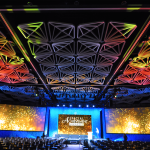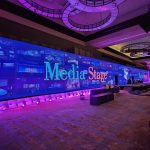Budget-Friendly Event Lighting Solutions to Transform a General Session Space (Part 2)
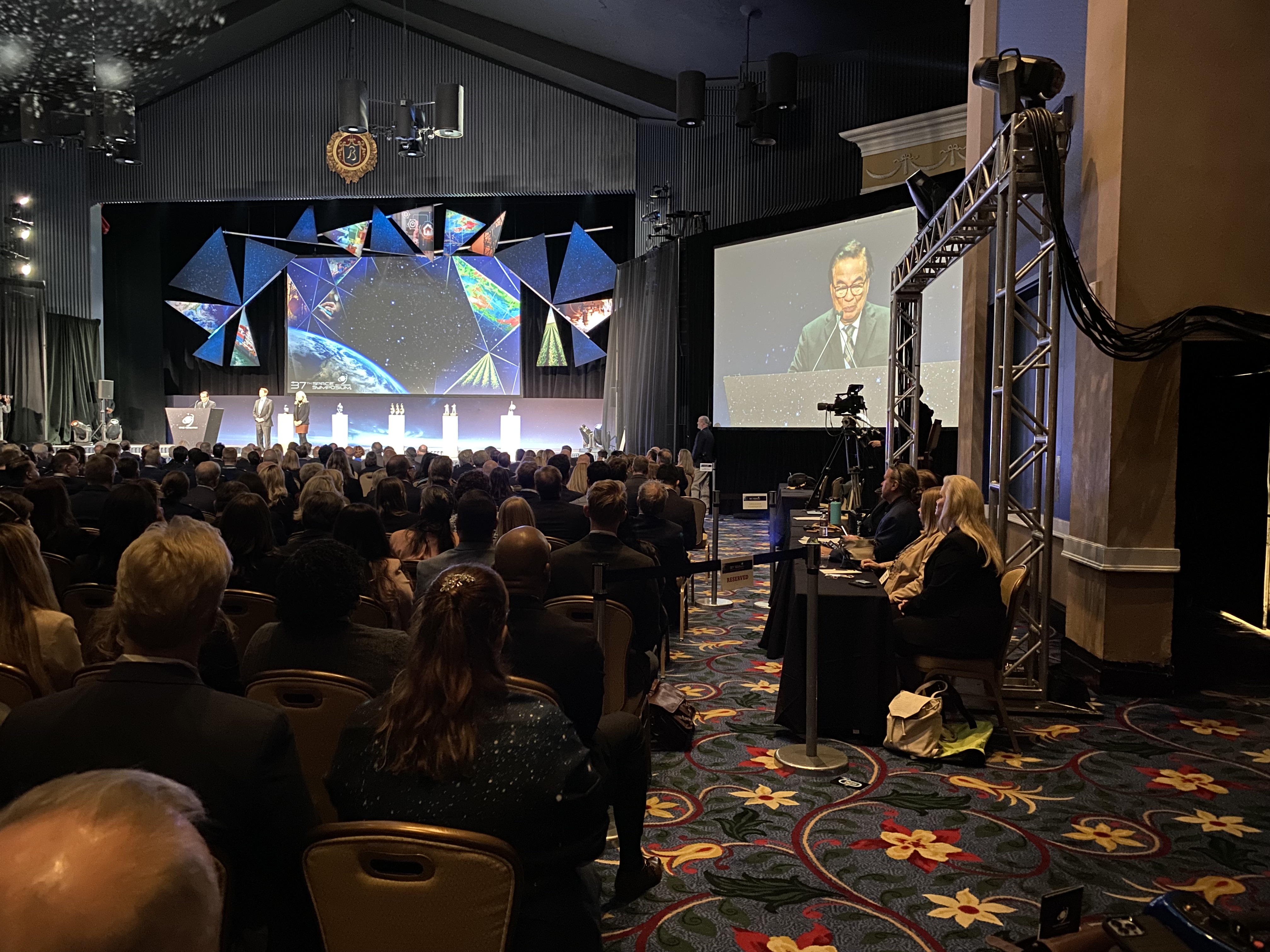
Photo by Eric Newkirk AVFX
Budget-friendly event lighting solutions that transform a general session space are crucial for a successful event. In addition to setting the ambiance, using strategic lighting techniques can create a sense of intimacy or grandeur, depending on the desired effect.
Although professional event lighting can be costly, there are many budget-friendly options available. The following Event Production Network (EPN) members reveal budget-friendly and innovative event lighting guidelines to transform a general session space, along with event lighting tips to consider for your next general session:
Budget-Friendly Event Lighting Guidelines
IThe budget-friendly guidelines for transforming your general session with innovative event lighting include:
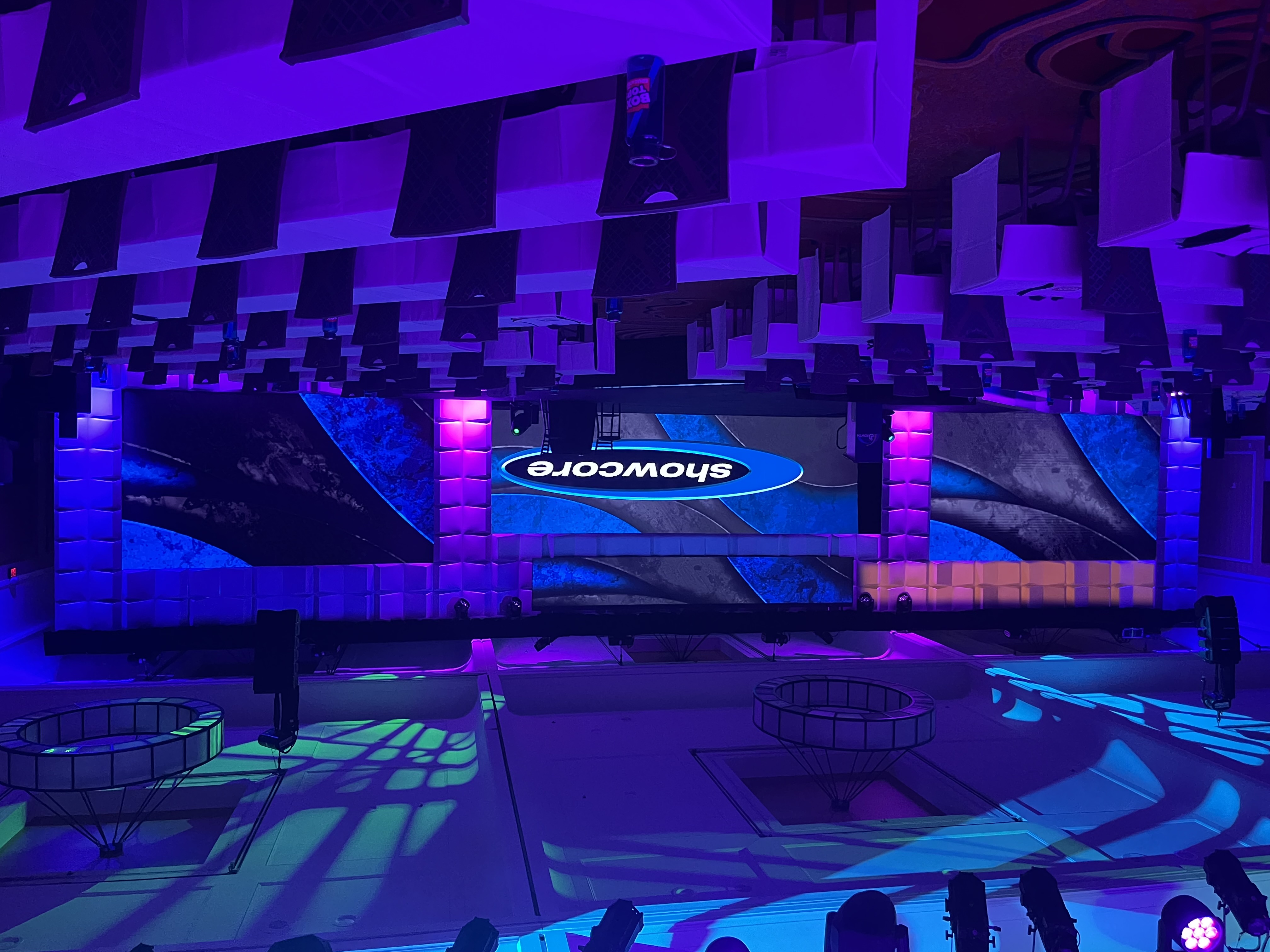
Photo by Showcore
Lowery: Prioritize your lighting needs. The first should always be presenter light, and the second is most often lighting the surface (usually drape) behind your presenter so they can stand out from their background on video.
If you’re bringing in scenic (or ‘fast scenics’ like Atomic or Dazian panels), plan on lighting the scenic elements before any other supplemental room lighting. Don’t spend money on scenic unless you have the budget to light it.
Wireless uplighting is easily the most cost-effective way to uplight your drape and walls. It also offers wonderful color and intensity effect options around the space. A few dozen uplights can do SO much for your room, without breaking the budget.
Even without moving lights, wireless uplighting can allow designers to create different looks for each of your sessions, as well as walk-in effects and even walk-on stingers. Using color effects around the room during breaks can give your audience a visual palate cleanse to help them return to the session ready to focus again.
One of my first lighting add-ons after stage light and room uplighting is usually house fill lighting. If I’m designing flown lighting, I almost always put some broad-wash color tuneable units in my design for room fill.
It’s often hard to get full control of the house lights in a hotel venue. Being able to provide colorable house lighting on my rigs allows me to fully control the entire room from full blackouts to saturated client colors.
Additionally, seamlessly shift from a walk-in color effect based on the client’s logo, to dim house for presentations, color-balanced warm white for meals, dark blue fill for video presentations, and even dance party effects.
Passa: Uplighting is a quick way to see the value put into a lighting budget. The next step is to focus on highlighting points of interest in a room. If the building has some unique architecture, by accenting it, you’ve effectively maximized what you can do with each light.
There’s an argument to be made that hanging moving lights over standard lekos for a stage wash can actually shave some resources.
This can happen for two reasons:
-
-
- Power consumption: With venue power fees growing, an order for a smaller power service can equate to savings.
- Lighting focus: With hanging movers, you can eliminate a few variables. One is that the house/venue may be waiting for your team to finish focusing to place tables or chairs. Another is the cost of renting or utilizing a lift to focus lekos by hand.
- Brand manuals along with linens and plate/glassware information. This ensures the correct colors and pairings of colors to use and colors to avoid.
- Preproduction design brainstorming notes and image research.
- Any thematic information for your event.
- Powerpoint slide templates.
- Important video content, including any opening/closing videos or content produced for the event that you may want to combine with lighting effects in the house.
- Audience demographics. Younger audiences may prefer a flashier show, while older ones might need more house light for safety. Some groups like more subdued effects, while others want as much flash as the lights can produce.
- Brand manuals along with linens and plate/glassware information. This ensures the correct colors and pairings of colors to use and colors to avoid.
- Preproduction design brainstorming notes and image research.
- Any thematic information for your event.
- Powerpoint slide templates.
- Important video content, including any opening/closing videos or content produced for the event that you may want to combine with lighting effects in the house.
- Audience demographics. Younger audiences may prefer a flashier show, while older ones might need more house light for safety. Some groups like more subdued effects, while others want as much flash as the lights can produce.
- Brand manuals along with linens and plate/glassware information. This ensures the correct colors and pairings of colors to use and colors to avoid.
- Preproduction design brainstorming notes and image research.
- Any thematic information for your event.
- Powerpoint slide templates.
- Important video content, including any opening/closing videos or content produced for the event that you may want to combine with lighting effects in the house.
- Audience demographics. Younger audiences may prefer a flashier show, while older ones might need more house light for safety. Some groups like more subdued effects, while others want as much flash as the lights can produce.
- Brand manuals along with linens and plate/glassware information. This ensures the correct colors and pairings of colors to use and colors to avoid.
-
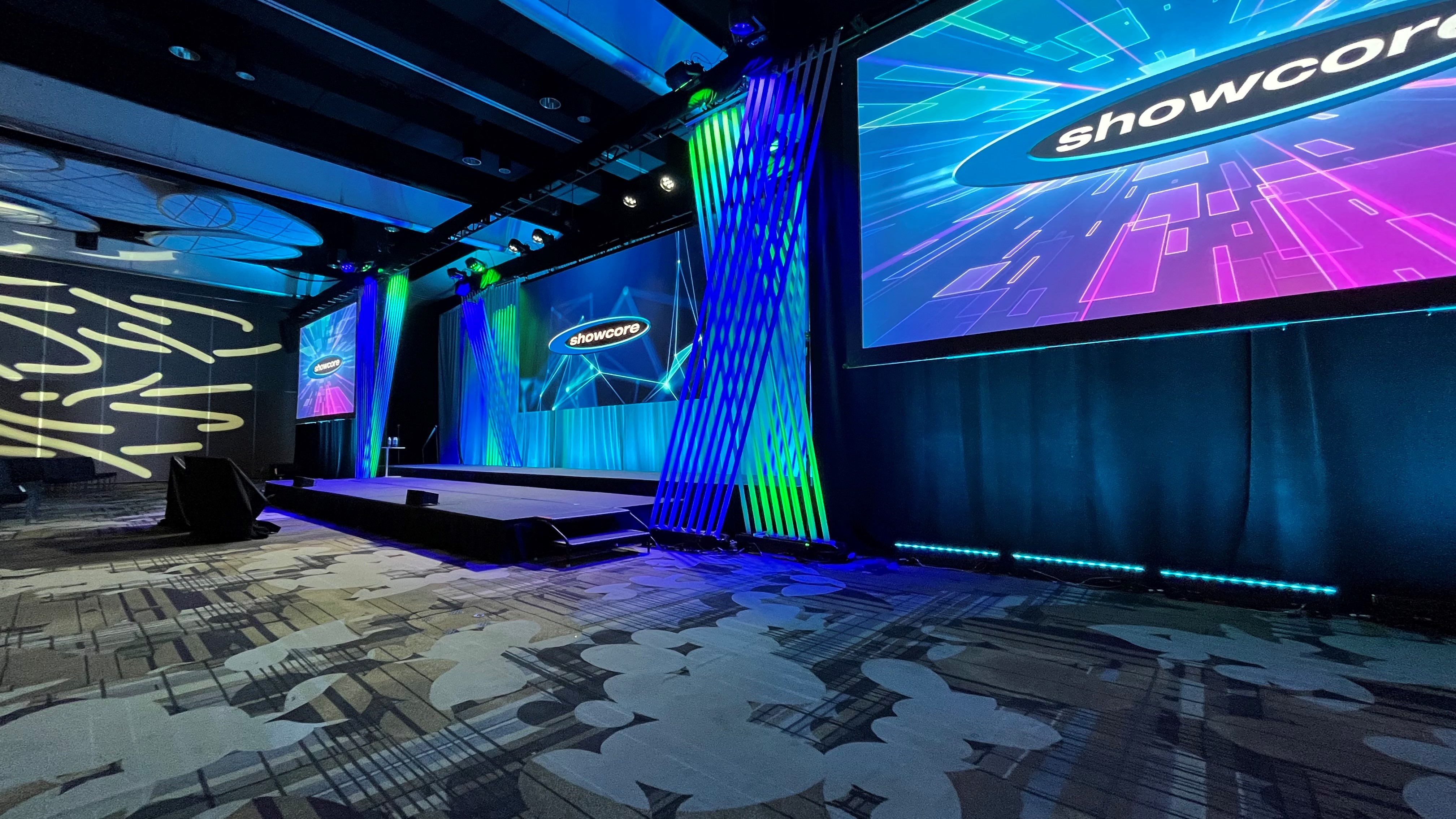
Photo by Showcore
Lastly, is the actual cost of labor to focus, which in its standard form takes two to three participants. They include someone to run the desk, one in the lift to focus and one on stage to give direction. Efficiencies can be made to eliminate some of this, but seemingly all of this can be avoided by a lighting designer that can control and see the lights from the ground.
Working with a full service AV company will ensure a seamless experience. Your account or project manager will give proper direction to your lighting designer, which will vastly improve your results. Not only will this save time and questions, but it also will create a hive-minded approach towards a single vision for the event.
General Session Event Lighting Tips
The following are event lighting tips to consider for your next general session:
Lowery: Good communication is the one common factor with all the best shows in which I’ve been a part. Preproduction meetings between the vendor and the client are essential to get everyone on the same page.
Show documentation, like a run of show with cueing notes and scripts with slide numbers, let everyone on the team know what to expect and allow a stage manager to ensure the production flows smoothly.
Here’s some information a lighting designer can use to help dial in a design to your show and audience:
- Brand manuals along with linens and plate/glassware information. This ensures the correct colors and pairings of colors to use and colors to avoid.
- Preproduction design brainstorming notes and image research.
- Any thematic information for your event.
- Powerpoint slide templates.
- Important video content, including any opening/closing videos or content produced for the event that you may want to combine with lighting effects in the house.
- Audience demographics. Younger audiences may prefer a flashier show, while older ones might need more house light for safety. Some groups like more subdued effects, while others want as much flash as the lights can produce.

